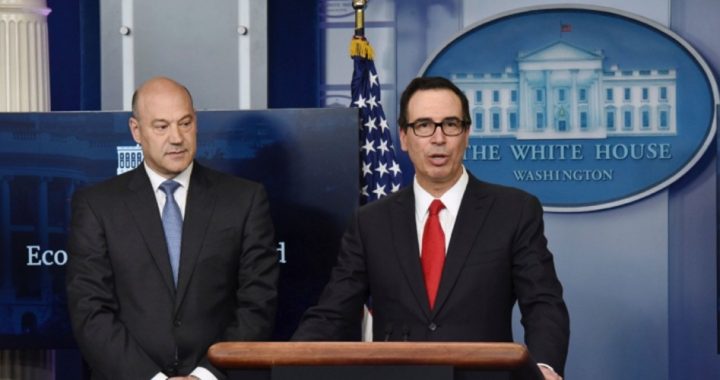
Initially referred to as a statement of general principles, the one-page summary of the Trump administration’s tax reform plan looked more like a trial balloon. Said the White House, the administration “will hold listening sessions with stakeholders to receive their input … [in order to] develop the details of a plan that … can pass both chambers.”
Reiterating Trump’s goals of growing the economy, creating millions of jobs, simplifying the tax code, and providing tax relief to middle-income families, the trial balloon as summarized would
• lower the corporate tax rate from 39.6 percent to 15 percent, including Subchapter S or “pass-through” corporations;reduce the number of individual income tax brackets from seven to three: 10%, 25% and 35%, depending on income;
• double the standard deduction, currently at $6,300 for individuals and $12,600 for married couples filing jointly;
• expand tax relief to families with child and dependent care expenses;
• eliminate various tax breaks that apply mainly to the wealthiest taxpayers;
• keep mortgage interest and charitable deductions while eliminating deductions for state income taxes paid
• repeal the Alternative Minimum Tax (AMT);
• repeal the 3.8% ObamaCare tax that hits small businesses and investment income;
• allow a one-time “tax holiday” for international corporations holding trillions overseas; and
• eliminate tax breaks for special interests.
Trump’s Treasury Secretary Steven Mnuchin (shown, at podium) called it “the biggest tax cut and the largest tax reform in the history of our country,” while his Chief Economic Advisor Gary Cohn (also shown) said the plan represented a “once-in-a-generation opportunity to do something really big.”
What’s really big is the potential deficits Trump’s plan could cause, with at least one critic estimating that it would result in $6 trillion in deficits over the next 10 years.
The underlying goal of the administration being pushed by Trump is that by cutting these tax rates the economy would awake from its slumber and start generating three percent annual rates of growth of the nation’s GDP. Although the Laffer Curve was not mentioned by Mnuchin or economist Stephen Moore (in his recent critique of the government’s economic outlook), it’s the same principle: lower tax rates to result in higher economic growth which will (in theory) result in higher taxes collected by the government.
The increase in the standard deduction is also designed to allow an estimated 27 million Americans who file a long form listing their mortgage interest and charitable deductions to use a “big postcard” instead. This “simplification” of the tax code has long been a stated goal of Trump as candidate and his administration after he was inaugurated in January.
Wednesday’s announcement is just the opening salvo in what promises to be a long war before anything reaches Trump’s desk. Senate Minority Leader Chuck Schumer is calling it a gift for the already-wealthy Americans who don’t need any more tax breaks. And Mnuchin referred to the Senate strategy of “reconciliation” that is likely to be needed to pass the Senate without Democrat votes. He noted that he hoped that the bill that finally passes Congress and is signed into law by the president will be permanent, but “if we have them for [just] 10 years, that’s better than nothing.”
Reconciliation would allow Republicans to pass it without a single Democrat vote, but would also cause the plan to expire in 10 years if it generates deficits. This is what happened to the tax cuts enacted under President George W. Bush. When the projected revenue growth didn’t meet expectations, his tax cuts for the most part were automatically ended.
The obstacles are substantial, including determined if futile resistance from Democrats and complaints from the energy industry which might see its depletion allowance deductions cut or removed in Trump’s final bill. Those details will be revealed in June and could also negatively impact heavily-indebted public utilities and cable companies that might see some loss of their interest deductions.
On the other hand, winners could include companies that are currently most negatively impacted by high corporate rates in force, including engineering and construction companies, food wholesalers, publishers, and retailers.
The old proverb applies as Trump’s trial balloon gets translated into specific language in the tax reform bill in June: “There’s many a slip ‘twixt the cup and the lip.” A newer one is this from Isaac Boltansky, an analyst at Compass Point Research and Trading, who has been following these events closely:
The sugar high of tax cut headlines could turn into a nagging headache once stakeholders return to the painstaking consideration of process and pay-fors.
Photo of Treasury Secretary Steven Mnuchin (at podium) and National Economic Council director Gary Cohn: AP Images
An Ivy League graduate and former investment advisor, Bob is a regular contributor to The New American magazine and blogs frequently at LightFromTheRight.com, primarily on economics and politics. He can be reached at [email protected].
Related article:
Former Heritage Economist Stephen Moore Refutes CBO’s Doom & Gloom



